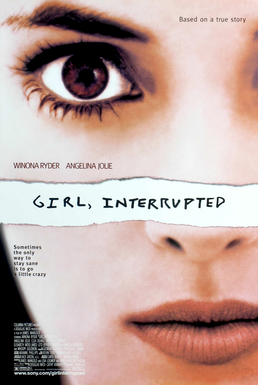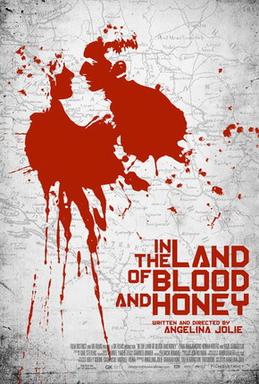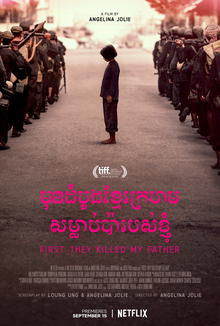
ANGELINA JOLIE

STAR FINDS POWER IN ALL THE DARKNESS SURROUNDING HER CHARACTERS
By PETER THOMAS BUSCH
The attention from the paparazzi the star received was at times all consuming, but when Angelina Jolie performed, her presence was equally intoxicating.
This high octane celebrity became nothing short of invincible when playing the action game hero Lara Croft in the Tomb Raider franchise.
Croft loved preparing for the high octane of her adventures as much as the adventures themselves in Lara Croft: Tomb Raider (2001), so much so that Jolie reprised the role just two years later in Lara Croft: Tomb Raider – The Cradle of Life (2003).
Jolie presents Croft as a toxic blend of dominant masculine traits with ever present underlying female characteristics. Lara is well versed in arms and munitions and motorcycles and luxury sports cars among her vast wealth living on an English estate. But Croft also enjoys dressing like a lady when the occasion requires.
Like Lara, Angelina was on a bit of a tare after winning the Oscar in a supporting role for her performance in Girl, Interrupted (1999).
Winona Ryder stars as Susanna in the lead role, joining a group of young women adjusting to admission in a mental health hospital after she attempts to commit suicide. Lisa, played by Jolie, just arrives with a bit of a splash as she is well known after being admitted for the last 8 years.
The supporting performances of Clea DuVall as Georgina, Brittany Murphy as Daisy and Elisabeth Moss as Polly and Jared Leto as Tobias are noteworthy and should not be forgotten. But Jolie’s performance of Lisa steals the headlines, just as Lisa uses her charisma and knowledge of the ins and out of the facility to lead the other women from day to day.
Susanna finds out all too late that Lisa has a dark side.
Jolie is the daughter of a movie star turned movie star herself turned game action hero into high octane movie time female role model. The toxicity of this lifestyle seen by millions under microscope creates many ups and downs.
In the Changeling (2008), Jolie plays a woman battling the patriarchal institutional biases that weighed heavily against women in all walks of life during the 1920s.
Director Clint Eastwood uses a bit of art and a bit of flash for this biopic film to show the emotional toll on a working single mother after her son disappears from their home.
Christine waits for the Los Angeles Police Department to find and return her son to her, but when the news gets to her, and she meets the boy at the train station, Christine challenges the police’s assertion that the young boy returned to her is her son.
Jolie works through the barriers present in the system, that present on many layers, until the character receives a bit of redemption when the police begin to realize their mistake.
Eastwood uses this true crime missing person case as a metaphor for female gender discrimination.
Christine is doing just fine raising her son on her own, working in a telephone room to pay their way through life.
Jolie then takes the narrative closer to real time with her feature film directorial debut, creating a dramatic and dark film about how women were treated during the ethnic conflict in eastern Europe In the Land of Blood and Honey (2011).

The camera follows a gritty street battle between ethnic groups in the Bosnian War prior to the NATO, American led intervention.
The female struggle to survive military conflict becomes a dominant parallel narrative with the men with guns and physical power in an urban war setting.
Jolie graphically shows how rape is used as a weapon to control the female population and deconstruct the strength of families, more often than not, although not always, when the men have left for the live war theater.
The camera shows the senseless sexual violence and killing and the drunken hubris of men with guns.
The film about ethnic cleansing is a multi-dimensional depiction, but one that ultimately highlights the story of how love gets lost in all the hate.
In Unbroken (2014) director Jolie shows how the camaraderie of young men so easily dissolves under the pressure of violence.
Jolie constantly stirs the emotions with oscillating moments of beauty, calm and violence.
This biopic film about Olympian Louis Zamperini begins with the rising talent of a long distance runner and his performance in the 1936 Berlin Olympics prior to the American involvement in world War II.
Zamperini eventually becomes part of a flight crew in an American fighter squadron whose plane comes down in the ocean off of Japan.

Zamperini and two other survivors spend 47 days adrift on a raft before being picked up by a Japanese naval ship.
Jolie provides the cast aways a bit of help with fish from the ocean, sharks and the sudden rain before the narrative shifts from being adrift in the ocean to being prisoners of war.
The director splashes film art throughout the prisoner of war narrative, under the shifting skies of the distinct seasons. Many scenes becoming compelling as artful portraiture.
Jolie creates several scene transitions by using the colors, tones and shapes of image composition as scene advances.
In the biopic film, written for the screen by the lead character, First They Killed My Father (2017) Jolie directs a young five year old girl through the genocidal war brought on by the Khmer Rouge in Cambodia during the 1970s.
Loung Ung learns to survive through passive resistance when her family is destroyed and she is taken away to be trained as a child soldier.
Jolie uses more sophisticated film art to highlight the plight of Ung, played by Sareum Srey Moch, and how she survives.
The camera again is used to show how darkness consumes light when familial love and the innocence of children hides from the threat of violence and hate. Jolie uses dark shadows to paint portraits of different stages of the child’s journey of survival, but not so much art that the art overwhelms the messaging of the film.
Jolie continually reemerges from the dark shadows of celebrity life to find the bright highlights of success that her talent provides.
The directorial films better reflect her screen character, slightly more masculine than one might expect, but feminine, mysterious and somewhat alluring – unabashedly representative of a life filled with high and low octane moments.
Jolie’s father, actor Jon Voight, was brought up a Catholic Slovakian, attending Catholic University in Washington DC. Voight initially struggled to survive as an actor, but he soon enough found stardom with a leading role in Midnight Cowboy (1969) co-starring Dustin Hoffman.
Voight, and Jolie’s mother, Marcheline Bertrand, soon separated. And Bertrand and Jolie moved to New York, while Voight pursued stardom in Hollywood.
Jolie experienced the great diversity of the people of New York with the ethnic mix of the population and various fringe groups living in the distinct neighborhoods of the most cosmopolitan city in the world.
As a teenager, Jolie moved back to LA with her mother, but she had clearly already found the darkside of humanity, with her punk leather outfits, studs and chains presented in stark contrast to the pretty celebrity children she went to school with at Beverly Hills High School.
Jon and Marcheline encouraged Jolie to study acting at Lee Strasberg where Jolie was taught the method, a complicated drawing out of bits and pieces of inner emotions to create a complete acting performance.
Jon and Jolie would then spend weekend nights together rehearsing character performances in various plays.
The psychological abyss of teen angst would prove to be a great source of acting talent. As an actor and as a director of film, Jolie turns everything dark and shows the struggle to reemerge into the light again.
The film characters often have a death wish and experience the adrenaline rush of being confronted by violence and hatred. But that instinctual response to a living, breathing reality of brutal hostility, perhaps not experienced by everybody, is very much the way humanity reacts and survives to live another day.
The characters, like Jolie, often manage to protect that vulnerable side so that the better parts of humanity continue on afterwards, despite the struggle with the ever present darkness.
